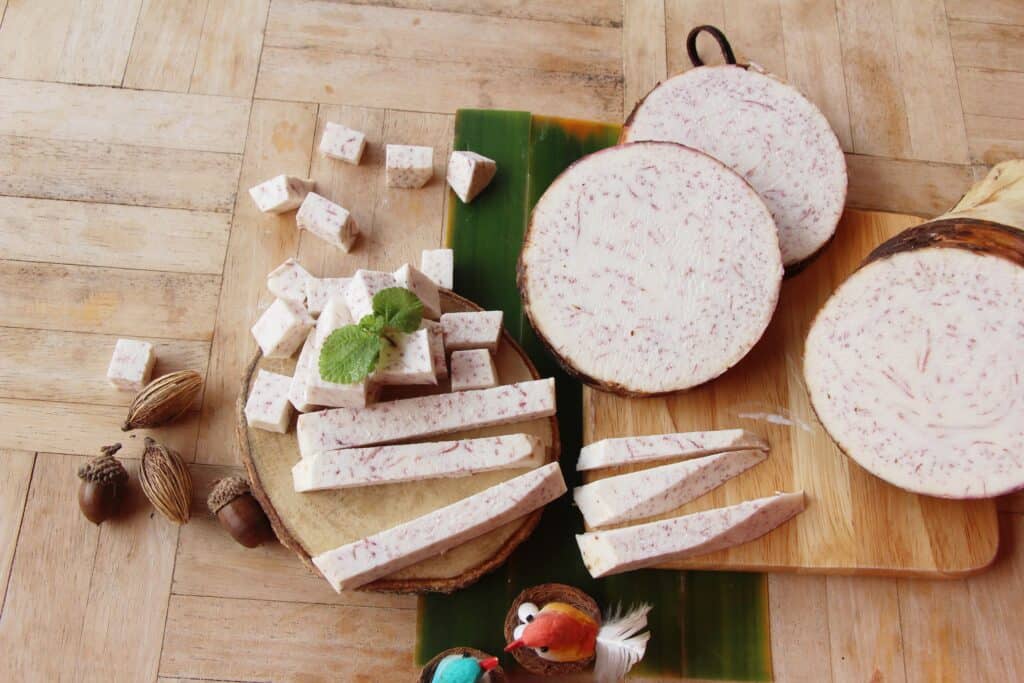Growing Dasheen/Eddoes- Tips and Tricks


What would Sunday lunch (the biggest meal of the week on the islands) be without a healthy serving of Callaloo, rice, stew chicken, macaroni pie and slices of fried plantains or dasheen? In Trinidad and Tobago, dasheen and eddoes are must have ground provisions in soups and other meals. Also, planting dasheen has perks as the leafs make a popular dish called callaloo, in addition to being used for oildown which is a dish from breadfruit and saheena. Eddoes is used as a provision and sometime i've seen it in punches and pies.

 Ground provisions are delicious and they even offers exceptional nutritional value however, they sometimes get kind of pricey in the local market place, so why not plant it yourself and save during the pandemic.
Ground provisions are delicious and they even offers exceptional nutritional value however, they sometimes get kind of pricey in the local market place, so why not plant it yourself and save during the pandemic.
Planting your own Ground Provisions is healthy, economical and extremely convenient. Do you love ground provisions like Dasheen, Cassava and Eddoes as much as I do? Well why not grow them right in your own yard? Planting ground provisions is simple and does not require too much laborious work and as such you can Do It Yourself. You don’t specifically need any space right outside your kitchen door to create this provision garden, any cool area around your yard can be utilized.
The Dasheen has a two-fold purpose, one as ground provision and the other as Callaloo bush. When planting dasheen make sure that the area is wet, as dasheen grows best in wet conditions. Plant your dasheen in an area where the soil is damp and it will thrive, if not ensure to water the dasheen stool regularly to keep its soil as moist as possible. Trini's usually plant dasheen where the waste water from the kitchen flows. There are some tools needed such as a shovel or trowel, some organic material, a sharp clean knife, a garden hose or watering can and a pair of shears.
 The dasheen plant has tubers and each tuber has an eye, so be sure to plant the tubers three inches into the ground and a few feet apart, with each eye facing upward. It should be noted that a tuber may have more than one eye but a sharp clean knife can be used to divide the tuber so each tuber section being planted has at least one eye. After planting the tubers place some organic soil around them and water. During its growth, the damaged leaves can be trimmed and the good ones, known as ‘Callaloo Bush’, can be cut to make Callaloo.
The dasheen plant has tubers and each tuber has an eye, so be sure to plant the tubers three inches into the ground and a few feet apart, with each eye facing upward. It should be noted that a tuber may have more than one eye but a sharp clean knife can be used to divide the tuber so each tuber section being planted has at least one eye. After planting the tubers place some organic soil around them and water. During its growth, the damaged leaves can be trimmed and the good ones, known as ‘Callaloo Bush’, can be cut to make Callaloo.
Eddoes can be considered a smaller version of the dasheen and although their leaves look similar, when pealed and cooked they look and tastes entirely different from the dasheen. After the area for the eddoes has been identified, which can be in the full element of the sun or partial shade, they should be planted, approximately a foot apart and four inches deep, after which they will grow into a clump. The leaves will wither as if they are not getting sufficient water but do not water them because the eddoes may not boil. The eddoes take at least six months to grow and sometimes up to a year. They can be reaped during the middle to the end of the dry season, which is during the months of February to May. If they are reaped in the rainy season they will not boil. For proper reaping use a trowel. While there is very little effort to grow eddoes anywhere in your garden, every effort should be made not to damage them when cutting your yard. Remember to save some of the bulbs for replanting the next season. Those you are going to eat, dry in the sun for at least a few days.











No comments:
Post a Comment